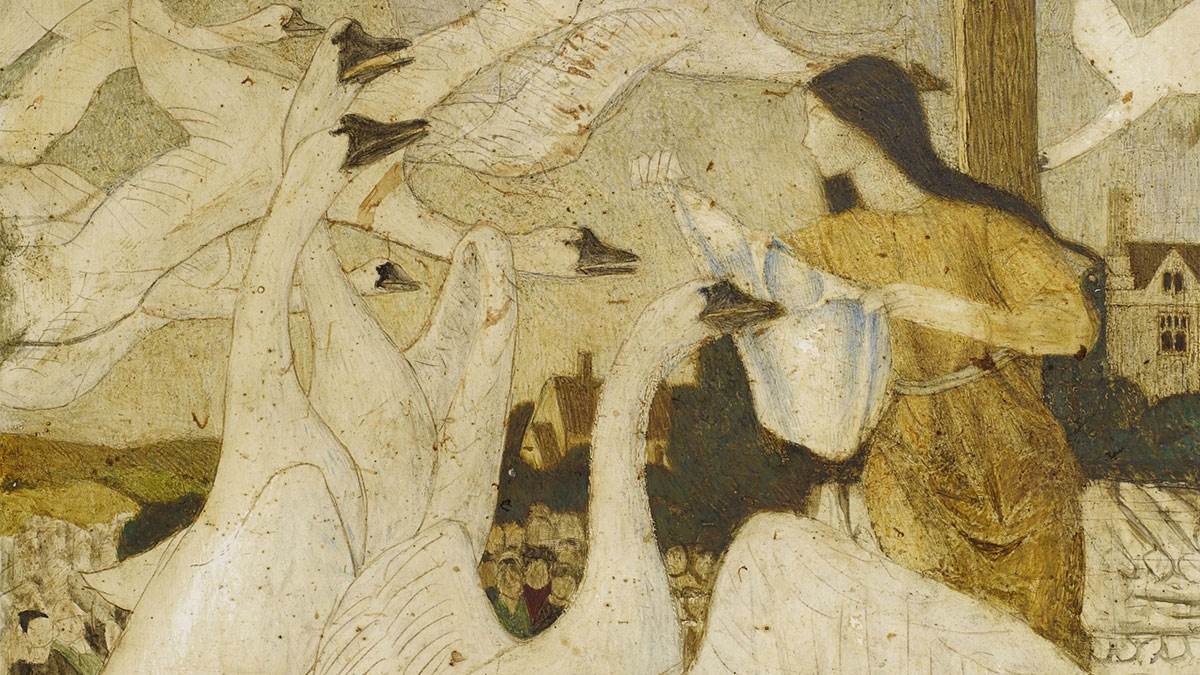The language of fairy tales and what they tell us
Published on: 06 January 2020 Author: Cerrie Burnell
Cerrie Burnell has always been fascinated by fairy tales. Here, she explains why every culture has their own version of these stories, and why they continue to affect what we read today.

I have always loved the language of fairy tales and the way they command attention from the very first word: once.
It might be ‘Once long ago on a night as dark as thunder.’ Or ‘Once there was a queen who was as cruel as winter.’ Or, most familiar of all, ‘Once upon a time...’
From the moment the sentence is spoken, a soft magic descends and everyone knows to suspend their disbelief and listen instead with their childhood heart, as something quite special is about to unfold.
More about Cerrie Burnell: our Writer in Residence
Balance of light and dark
Fairy tales are said to have begun as early as the 16th century and were short snippets of folklore, spoken out loud, depicting stories of great hardship, or wickedness that were resolved with an enchantment. They were distinguished from legends – stories which implied a notion of truth and were predominantly aimed at children, holding a poetic beauty and timelessness. In these legends, evil deeds or bleak circumstances were entwined with sentences that sang with hope.
In the fairy tale, no matter how terrible the situation faced by our protagonist, it is lightened by brief sprinkles of magic, heroic acts and often love. The glory of the fairy-tale villain is never long lived, their all-consuming darkness being balanced with the light of a kind deed or fairy godmother.
Fairy tales exist in every culture and language. They embolden our childhoods with a shared experience of storytelling, a brightening of our imaginations and an emotional response to literature. They are warnings learned from a safe distance. The action is always happening in a different time to our own, so the danger isn’t threatening.
Fairy tales in every culture
These much-loved stories are part of our cultural heritage and are often the root from which classical children’s books have blossomed. They are a global phenomenon, having whispered their way around the world, incorporating multiple changes along the way.

Painting of The Wild Swans, 1928, by Arthur Joseph Gaskin
For instance, Cinderella has its origins in Chinese culture, yet there are 500 different versions of Cinderella that have been found in Europe alone. In earlier translations, the fairy godmother takes the role of a fish, who grants Cinders her wishes. In another telling, there is no actual fairy godmother but a tree that has grown upon the grave of Cinders' mother. Cinders cries at the root, ‘watering the tree with her tears’, and the tree produces everything she needs: the dress, the coach, the shoes... Amazing!
In an early French version, Cinderella is not a poorly treated parlour maid, but a highly gifted witch who is very pragmatic and has the ability to appear invisible and tame birds.
The version of the Cinderella tale that we know best also comes from France, where the description of the glass slippers was originally ‘pantoffles en vair’, which means ‘slippers of white squirrel fur.’ It's believed this was mistranslated or misheard as ‘pantoufle en verre’: slippers of glass. Hence, in our beloved version, Cinders goes to the ball in magnificent but highly unwearable glass high heels.
But this hardly matters. If anything, it adds to the wonder. Cinderella is going to the ball in a pumpkin coach. Nothing about that night is supposed to be real. In contrast to the cruelty she’s suffered, this is a night of extraordinary happenings and the glass slippers are simply a dazzling part of it.
And its that which I love best: the commitment to creating something gloriously spellbinding. The way the shoes appear, with the help of a magic wand, is startling, exquisite and joyously unbelievable. It almost doesn’t matter what the slippers are made from, if they are too grand or "out of reach" for seemingly normal people to ever own.
I love that the translator mistook fur for glass without question. To me, white squirrel fur is as unexpected as glass. I wouldn’t imagine wearing either. Yet, both capture my imagination. Both flavour Cinderella’s special night with wonderment. Both are memorable for years to come, as a moment of absolute triumph.
Legacy of storytelling
With the passing of time, the language of fairy tales has altered, so that readers of every age can still engage with the story. If we tried to read a fairy tale from a hundred years ago, we might grasp the meaning but the phrasing would seem peculiar.
I love that a fairy tale can pass through so many diverse societies and the language is able to capture the essence of enchantment, so the heart of the story prevails: the dark and the sorrow, the brilliance, and the utterly gorgeous and astonishing shoes, are still meaningful hundreds of years later. And the influence of fairy tales can still be found in brand-new books being published today.
Cerrie Burnell on how fairy tales can help every child to love storytelling
Take any of your favourite books or well-loved children’s classics: Harry Potter, Peter Pan, Lemony Snicket's A series of Unfortunate Events, or Phillip Pullman's His Dark Materials. You may consider these books to be very modern, or quintessentially British, but they all take inspiration from a legacy of storytelling that has woven its way through a myriad of times and cultures, making literature as powerful a part of our future as it is our history.
Much like the journey of how the first book came to be, and regardless of the language they began in, fairy tales are – and always have been – for everyone.
Topics: Fairy tale, Writer in Residence, Features, Cerrie Burnell






Add a comment